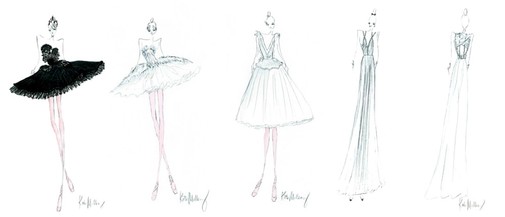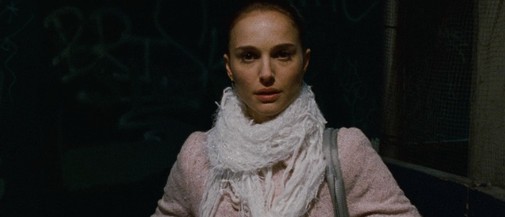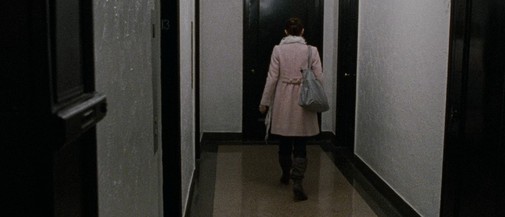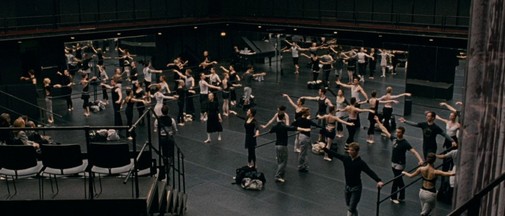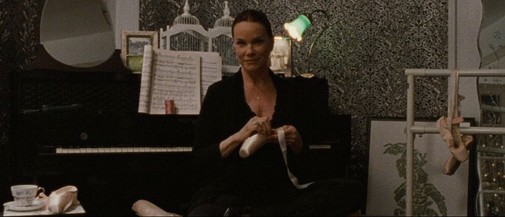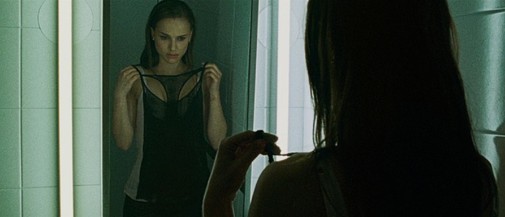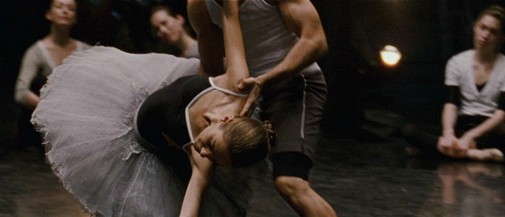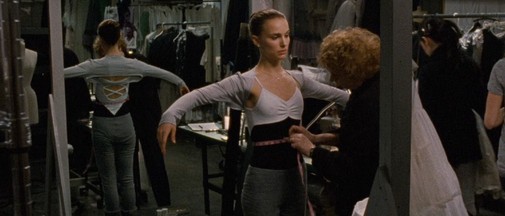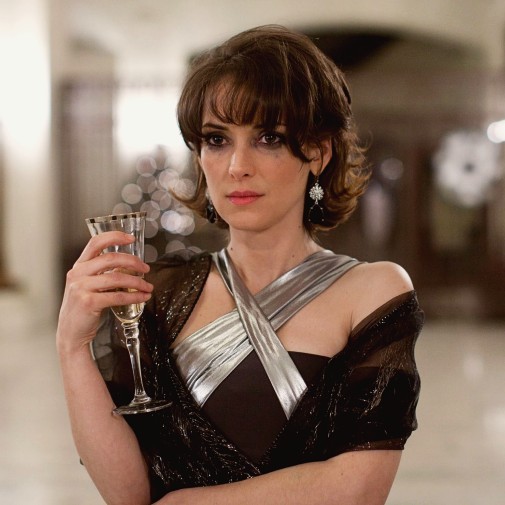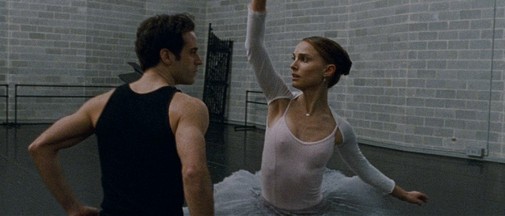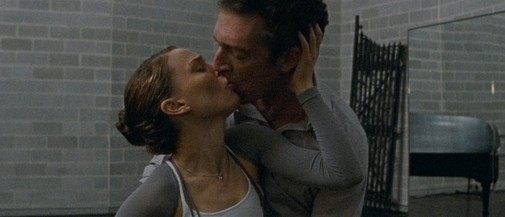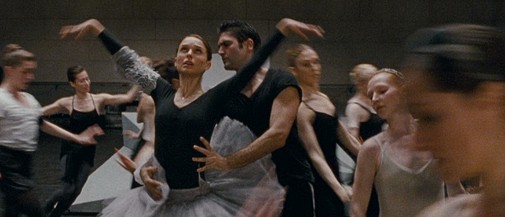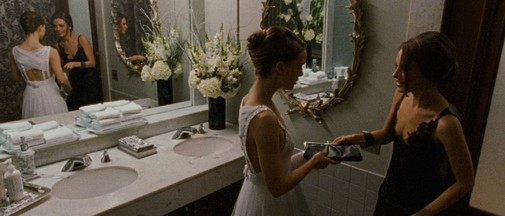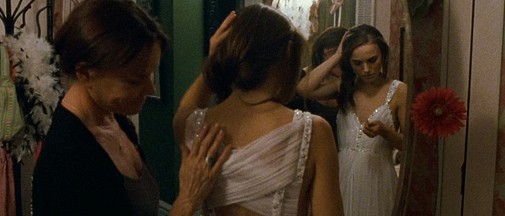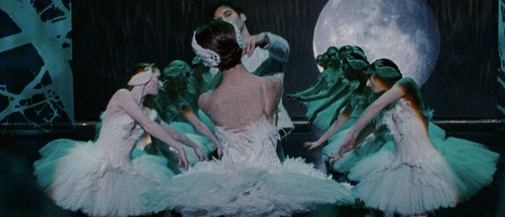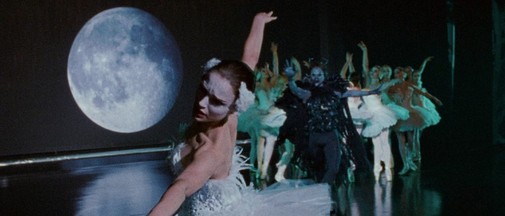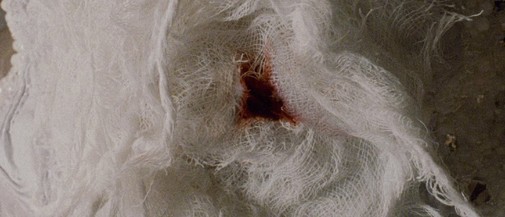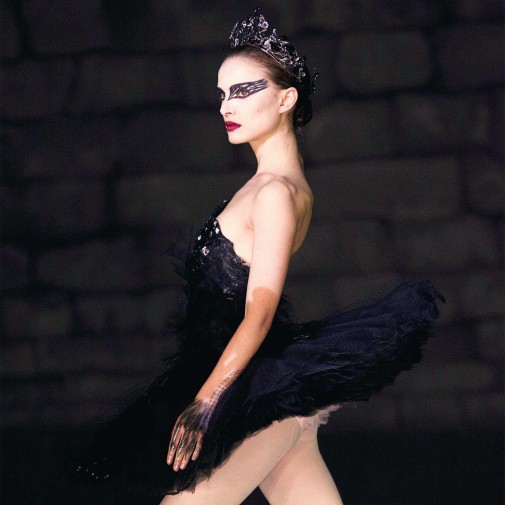
Unintentionally, this year's Horror Costuming miniseries has featured a lot of designers' partnerships. In both Hellraiser and The Cell, we explored how one person created a fantasy world while another cared for the mundane existence and its subtler evils. Those films showed how exemplary collaboration could produce unforgettable movie wardrobes. Now, with Black Swan, we arrive at a more disharmonious sort of alliance, one that fell apart after the fact, as the media celebrated some designers' work while ignoring the other, and the awards bodies did the reverse. It's a pity how much the controversy came to dominate conversations on the film's costumes. But, beyond the acrimony and scandal, Black Swan is a superbly designed horror movie whose costumes deserve analysis, applause, awards too…
While I have little enthusiasm for relitigating this mess, it's essential to acknowledge the conundrum of the Amy Westcott vs. Mulleavy Sisters (Rodarte). Before Black Swan even premiered at the Venice Film Festival, several fashion publications had written about Rodarte's work in Aronofsky's balletic nightmare. In truth, they acted as costume designers within the movie's fiction, taking care of the outfits worn during the Swan Lake performances. Theatrical designer Zack Brown also helped, constructing some of the garments worn by the corps. Apart from that, the Mulleavy pair also provided an evening gown for Portman and an Italian-style ballet costume that's only ever glimpsed in the oneiric prologue.
That's a lot of work and some incredible costumes, but it's far from the whole sartorial story when it comes to Black Swan. Still, reading such articles as their interview for the November 2010 issue of Interview Magazine, one would suppose they did the entire film's wardrobe and that Westcott wasn't involved whatsoever. Moreover, Rodarte wasn't even the only outside resource Westcott approached to make her vision a reality. I've already mentioned Zach Brown, but the leotards the costumer designed were made by a company like Yumiko, specializing in dance gear, while Freed of London and Mirella did the pointe shoes, each pair slightly different to distinguish characters in shots where we only see their feet.
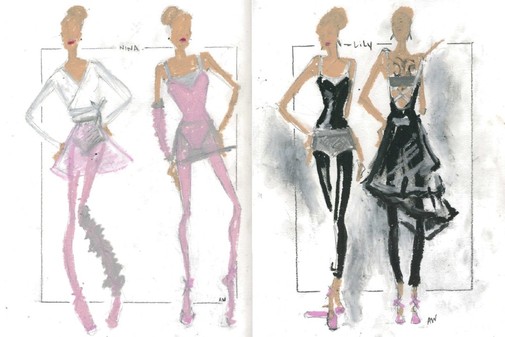 Amy Westcott's costume sketches
Amy Westcott's costume sketches
So far, so simple. It's easy to see why costume designer Amy Westcott was miffed, especially as she didn't have access to the same kind of PR management Rodarte certainly had. That being said, the Mulleavys' discontentment isn't unprecedented, recalling other prickly partnerships in Hollywood history. Despite having designed Sabrina's most memorable ensembles, Givenchy didn't get the same credit as Edith Head. Indeed, when Head won the Oscar for that 1954 classic, the French couturier was left empty-handed. Since the Rodarte team wasn't part of the costume designers guild, their lack of suitable credit was hard to dispute through official means. When the awards season heated up, Westcott received most of the Best Costume Design nominations by herself, including a BAFTA nod. Only the Las Vegas Film Critics Society and the BFCA gave credit to the Mulleavy sisters.
That's enough chatter about misleading credits and interviews. Let's dive into the costumes proper.
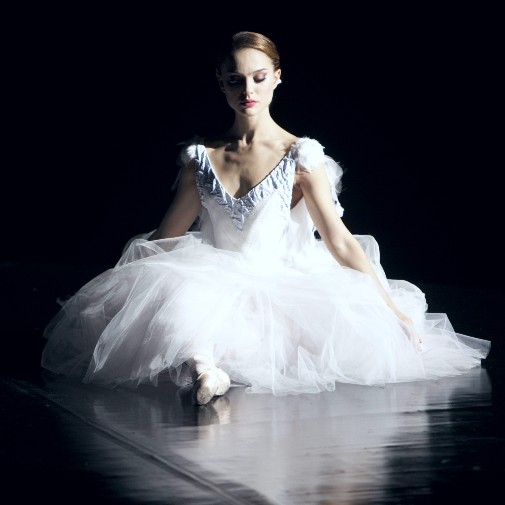
Black Swan starts with dreamy reverie, a night-time fantasy by the protagonist Nina Sayers, where she imagines herself as the Swan Queen of Swan Lake. As she wakes up in her pink bedroom wearing satin ribbons along her shoulders, there's a sense of prolonged childhood about the young woman. If anything, the dream was grittier than her waking life, more subsumed in complex textures than this home where everything is in order, a production designer's vision of what a ballerina's abode would look like. Quickly, one realizes that the environment is a product of Nina's mother. Erica is a former dancer whose severity rules over her daughter's life, making the girl into an embodiment of lost dreams, fulfilled at long last, if only vicariously. Even as she leaves the house, that ambiance follows Nina out the door.
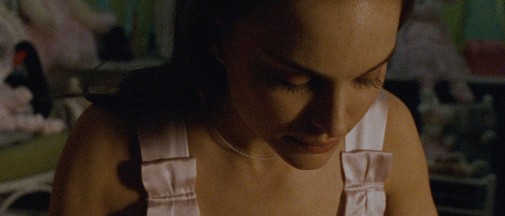
On her way to the New York City Ballet, where she's part of the company, Nina dons a pink coat and feathery scarf, hard silhouettes crashing into soft wispiness. At practice, we get a sense that she's not like the other dancers, the pale colors making her stand out amid a sea of people wearing black and gray along with white. Westcott attended dance rehearsals of actual companies to get the layered look of ballet professionals, striving for realism above all else. Still, while it all looks realistic in texture and shape, the color-coded nature of sets and costumes creates a pathway to a more theatrical sense of narrative, a performative take on the performer's existence. Everything is black, white, grey, and pink – absolutely everything.
Consequently, the entire world feels like a rehearsal room, every woman we come across dressing in what look like variations of a ballerina's go-to wardrobe. One look at Erica Sayers, and we can see that she used to be a dancer herself. It's all in the lines of her black costumes, how the elegant trousers extend the line of her leg, how the tight hairstyle and minimal jewelry recall what Nina and her colleagues wear in rehearsal. Another unnerving double is Lily, whose look is similarly dominated by black. Instead of motherly rigidity, however, this style is a signal of sensual rebellion. She's the black swan to Nina's white swan, which extends to her costumes' tactility. While our protagonist always wears dainty tiny studs in her ears, Lily has silvery feathers dangling from her ears, so stylized as to look like spikes, daggers, blades. It's easy symbolism, but the obviousness doesn't make it less impactful.
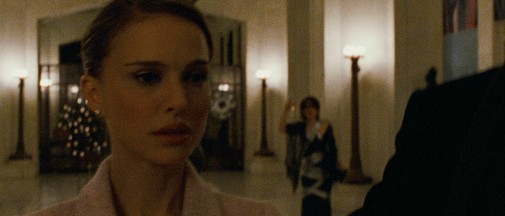
Another double is Beth, the woman Nina comes to replace as the company's lead dancer. Played by Winona Ryder with mercurial rage, we only ever get quick glimpses of the woman, making her costumes all the more critical. Notably, she wears a black dress adorned with silky silver wrapped around her body. As much as the stage wear is more eye-catching, if forced to choose what's Black Swan's best costume is, I'd probably go with Beth's evening look. In closeup, it looks like she has a big 'X' drawn over her, a visual manifestation of her downfall. Furthermore, it also appears as a glamorous sling to hold broken arms. As the camera runs away from her, the out-of-focus figure looks as if she's a broken doll, barely held together by the silk rope around her torso and legs.
Escaping from her mother's control and Beth's shadow, trying to embody the black swan Lily so effortlessly represents, Nina is driven to paranoia, a pursuit of perfection that leads to madness. The costumes illustrate the character arc as much as Natalie Portman's Oscar-winning performance. From white and pink, Nina grows into greys which, in turn, become increasingly darker as the weeks pass by. In the end, black has started to take over her wardrobe while Lily's garb gains white lines. Even when not wearing each other's clothes, the two women begin to look undistinguishable, more so than the other dancers, who already look like clones to start with. At the same time, a proliferation of wraps and shrugs, legwarmers, and arm covers emulate the same broken doll quality of the fallen diva.
Going from Westcott's designs to the realm of Rodarte, Nina's first public appearance as the company's new prima ballerina happens at a swanky party where she dresses formally for the only time in the flick. Even so, the Rodarte gown could pass for a deconstructed ballet costume. Silk tulle and chiffon wrap around the actress like bandages, crisscrossing on her back in a parody of the dancer's rehearsal outfits. The fabric also hides the rash on Nina's back, protecting her while projecting an image of princess-y glamour. It's a little girl's idea of a ballerina, made uncomfortably grown up by the hint of sideboob. The pristine quality of the outfit only underlines the mess going inside Nina's mind, the psychosis manifesting in visions of a mortified body. Human anatomy gives way to swan features, feathers burst through red skin, toes meld together, and white eyes turn black.
The idea of ruinous mutation also defines the ballet costumes. Part of the reason for Rodarte's involvement stems from their Fall/Winter 2010 collection, influenced by vultures, and their raven dresses for Spring/Summer 2007. Black feathers dominated the runway, and yet, when approached by Portman, Westcott, and company, the couturiers devised original pieces to be used in the film, focusing on the Swan Lake ballet. As philtered through the script, their style evokes a fractious relationship between Matthew Bourne-inspired modern ballet and the heritage of tradition. Their creations are functional ballet costumes but also textile sculptures. There's an imperative of easy movement in their design, while the dramaturgy lives within the details.
The use of open-weave gauze recalls a dressed wound, almost as if the white swan is already injured before Nina ever breaks her body with mirror shards and self-destructive fury. In closeup, this is particularly true, the cotton gauze blooming like flowers with a center of blood. Everything looks half-destroyed as if we're watching the ruined body of another Swan Lake from long ago, half decomposed but still beautiful. Before the blood, Odette's flat tutu is already covered in broken down fabrics, like angora wool knitted loosely and then further distressed, like broken veins and dead branches littered over the expanse of silk frills. As for Odile, she's Odette's shadow, a queenly apparition with a net over the face, mourning turned into aggressive glamour.
As a whole, the costumes are breathtaking, a perfect encapsulation of psychological horror through fashion, personal style, and evocative sights. Regardless of credit, they'd get my vote for the Best Costume Design of 2010. It's a pity AMPAS didn't think so. But then, again, the Academy seldom rewards contemporary designs.
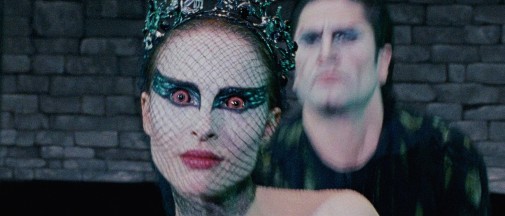
Black Swan is streaming on Disney+, Crave, and Starz. You can also rent it on many different platforms.
